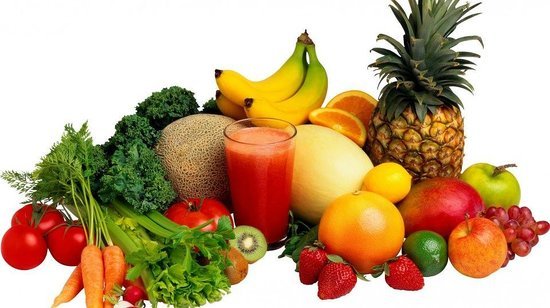Food that is not harmful to our body and that which is pleasant to our mind is pathya (wholesome food). This is always recommended and one which is harmful both for the body and the mind is not recommended and hence called as apathya (unwholesome food).
In the last segment of this article we discussed about the importance of RESTRICTED DIETARY REGIMEN during and for the treatment of any bodily imbalance. And when it comes to the Ayurvedic management of any illness, the treatment is incomplete without an appropriate dietary and lifestyle intervention. In today’s segment let us have a look at a chart which we need to follow for optimum health. This could be termed as the THUMB RULE(s) for the healthy individual to continue with their good health.
| Food pointers | Ideal for daily consumption/practice | Not ideal for regular consumption/practice |
| Number of meals | 2 major meals (breakfast is optional, unless too hungry) | More than 3 meals, repeated bouts of eating, binging, emotional eating |
| Meal times | · Noon (lunch) & around sunset (dinner)
· When hungry or when the tongue is clean and pink |
· Irregular meal times
· When not hungry or the previous meal is undigested or when the tongue is coated and white(which denotes indigestion) |
| Cereals | Rice(which is at least a year old),wheat , jowar, daliya | Ragi, corn, bajra |
| Pulses | Green gram, masoor (pink lentil), chawli(lobia dal) | toor dal (yellow lentil), vatana (green pea), matki(moth bean) |
| Vegetables | Bottle gourd, ridge gourd, snake gourd, brinjal, bitter gourd, lady finger, tender radish, cluster beans(chitki)
Leafy vegetables like palak, amaranth |
Cabbage, methi(fenugreek), shepu(dil), calocasia(alu) |
| Fruits | Pomegranate, gooseberry(awala), hapus mango, anjeer, black raisins | tomato, papaya, banana, oranges, jackfruit, pineapple, chikoo, apple, sweet lime |
| Milk/Milk product | Pure cow milk(A2), cow ghee made by melting butter | Other types of milk and derivatives, table butter, buttermilk, curd, yoghurt, cheese, paneer etc.
Having milk or ice cream before sleeping. |
| Non veg | mutton | Chicken, fish, egg, shellfish |
| Beverages | Tea/coffee not more than two cups daily | Avoid drinking on empty stomach or after meals. Avoid milk tea. |
| Water consumption | Based on thirst factor.
Boiled and cooled water is ideal. |
Excessive amounts /hydrotherapy, etc.
Energy drinks/chilled water especially with meals. |
| Mode of cooking | Boiled, steamed or roasted | Fried in oil, raw, fermented, processed, salted & preserved, sprouted, etc. |
| Others | · Use ghee for tempering dal or sabji with cumin, coriander seeds
· Use ghee for deep frying. · Use of Himalayan rock salt for cooking. · Unheated honey |
· Use of oil for tempering with asafoetida, mustard seeds, chillies, excessive garlic or onion, etc.
· Using oils with low smoke point especially low-grade olive oil for deep frying. · Avoid dried food (meat or vegetables) and meat from a diseased animal.
|
The contents in the do’s column are ideal to be eaten or practised every day whereas the contents in the don’ts column are harmful if ingested or practised everyday (occasional consumption may not be as harmful). There are clear rationales behind the information giving in the above table. The foods given in the regular consumption category have a very positive effect on the body, mind and the soul of an individual. Yet there are a few exceptions, changes to be made according to the body type or the seasonal variation.
People may argue that they have been having a certain type of food or certain lifestyle which they have been following for a long time but without any obvious problems. The reason behind this is the body is habituated to certain food or lifestyle which may apparently be harmful but does not show instant bad reaction but it gives rise to disorders which may look peripherally irrelevant like certain allergies, auto-immune syndromes, idiopathic disorders, chronic digestive imbalances and almost all metabolic disorders.
The allopathic system of medicine looks at food in terms of chemical compounds like proteins, carbohydrates, fats, etc. whereas Ayurved even considers the physical attributes such as temperature, age, density, texture, structural arrangement etc. of a given food item; for eg. cold water and hot water both have different properties and set of actions even though the basic item remains the same. Similarly, newly harvested rice becomes heavier for digestion than old rice even though the nutritional content remains the same according to the modern standards.
Also, there is this trend nowadays to believe in blind researches that influence the food market extensively which compels people to believe in so called “SUPER FOODS” which usually are expensive, exotic, unheard and rare. These researchers are proven wrong by newer researchers which introduce newer super foods and the trend continues. Foods like olive oil, rice bran oil, oats, muesli, corn flakes, quinoa, wild rice, black rice, brown rice, edamame, sea algae, flax seeds, green tea, spirulina, etc. are absolutely not necessary or sometimes downright harmful if eaten excessively. Stick to your local produce and eat logically respecting your appetite, body, diurnal and seasonal variation.
It is rightly said –
“If food is correct, medicine is not necessary. If food is incorrect, medicine is of no use!”
Dr SujalTorgalPatil
Consultant at Traya Natural Health Centre
